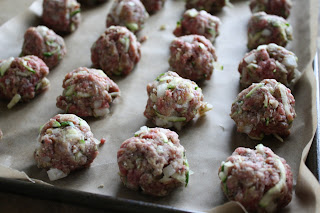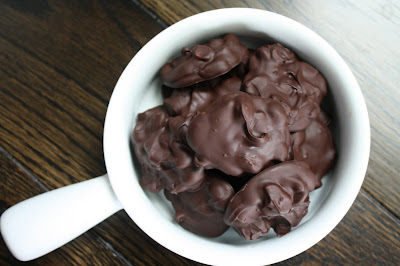At my work, we celebrate birthdays on a monthly basis and everyone brings in food. This week was June’s celebration and I decided to try making hummus from scratch. I have been wanting to do it for a while, but tahini, which is a common ingredient in hummus, scared me. Tahini is basically a ground sesame paste. The first time I went to the store to buy it to make hummus I about fell over. It was so expensive and you had to buy a huge container. Most hummus recipes call for only a few tablespoons and I didn’t know of anything else to use tahini in, so didn’t really like this! Basically I left and decided nevermind. Well a few months back, I read a tip about making your own tahini by grounding up sesame seeds. You absolutely need a great food processor for this because the seeds are so tiny, but I decided to give it a try. Turned out pretty good. I hope you will consider trying it as well because anytime you make something from scratch you are able to control the ingredients and I know I personally feel better about that!
Lemon Garlic Hummus
Makes 1.5 cups
Ingredients:
Chickpeas (garbanzo beans), 1 can drained or 2 cups fresh cooked beans
Garlic, 3 cloves
Lemon, 1.5 - 2 depending on how ripe they are
Tahini, 2 T (see below for homemade)
Extra virgin olive oil, 4T
Better Bonus Tip: Very easy to double, which is what I did to take the recipe to work.
To serve, sprinkle with paprika for color and a few additional squeezes of fresh lemon juice for fresh flavor. I personally think hummus can be bland by nature, but it is such a great protein packed snack. The extra squeeze of fresh lemon juice definitely helps! My favorite way to eat it is with pretzels because of the added salty crunch.
Better Bonus Tip: Try adding roasted red peppers, fresh herbs, artichokes, sun dried tomatoes, other citrus, or other dried seasonings for a different flavor.
This is a thicker hummus recipe and to be honest after I took pictures and my husband and I had a little bit, we decided to thin it out some to make it more like store bought conventional hummus. Add up to 4 T water in the blender, until you reach your desired consistency level.
Homemade Tahini
Ingredients:
Sesame seeds
Sesame oil
I bought a 3 ¾ oz container of sesame seeds, which equaled ¾ c seeds. Add seeds to your food processor and blend, adding a tsp at a time of sesame oil. I believe I ended up doing 4 tsp sesame oil, but of course forgot to write it down!! Stop every so often to scrap the sides of the processor. Mine didn’t turn into a complete paste, but blended up enough to not have seeds floating around in my hummus.
This makes quite a bit more tahini than you need for the above hummus recipe, but you need enough sesame seeds to be able to successfully blend. Store the extra in the fridge. I think you will realize how easy hummus is to make, you might not ever buy store bought again. The hardest part is probably making the tahini and if you store the extra in the fridge, you will have extra available to make a quick batch to use on sandwiches or wraps - a light summer dinner! ~Ashley









































